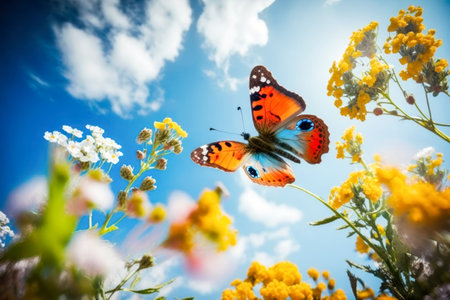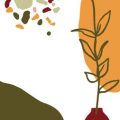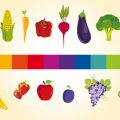Welcoming Pollinators Back: Why Spring Matters
As winter melts away, the first signs of spring bring a renewed sense of life to our gardens and landscapes. Early spring is a crucial time for pollinators like bees and butterflies as they emerge from their winter dormancy, hungry and in search of fresh nectar. The choices we make in our yards and neighborhoods during these weeks have a lasting impact on local pollinator populations. By creating vibrant, inviting landscapes filled with early-blooming flowers, we not only add beauty to our outdoor spaces but also offer essential resources that help these vital creatures thrive. Supporting pollinators in spring sets the stage for a healthy ecosystem throughout the year—one where gardens buzz with life, fruit trees flourish, and native wildflowers sway with visiting wings. A thoughtful approach to spring planting can transform any backyard into a sanctuary for bees and butterflies, ensuring their return year after year.
Choosing Native Blooms: The Heart of a Pollinator Garden
When planning a pollinator-friendly garden in the United States, one of the most meaningful choices you can make is to plant flowers native to your region. Native plants have evolved alongside local bees, butterflies, and other pollinators, creating an intricate relationship that supports both wildlife and ecological balance. These blooms are adapted to regional climates and soils, often thriving with less maintenance than non-native species and requiring fewer chemical inputs.
By selecting native perennials and annuals, you not only provide essential nectar and pollen sources but also offer nesting sites and shelter for beneficial insects. Below is a quick reference table highlighting some popular regionally native flowers across different parts of the U.S., each beloved by local pollinators:
| Region | Native Flower | Pollinator Supported | Bloom Time |
|---|---|---|---|
| Northeast | Bee Balm (Monarda didyma) | Bumblebees, Hummingbirds | Summer |
| Southeast | Black-eyed Susan (Rudbeckia hirta) | Butterflies, Native Bees | Late Spring–Fall |
| Midwest | Purple Coneflower (Echinacea purpurea) | Bees, Monarch Butterflies | Summer–Early Fall |
| Southwest | Desert Marigold (Baileya multiradiata) | Solitary Bees, Butterflies | Spring–Fall |
| West Coast | California Poppy (Eschscholzia californica) | Honeybees, Hoverflies | Spring–Early Summer |
| Pacific Northwest | Lupine (Lupinus polyphyllus) | Bumblebees, Mason Bees | Late Spring–Summer |
The Benefits of Going Native in Your Garden Design
Selecting regionally appropriate blooms infuses your landscape with natural beauty while providing a dependable lifeline for bees and butterflies. Unlike exotic ornamentals that may lack nutritional value or even disrupt local ecosystems, native flowers ensure continuous food sources throughout the growing season. Consider planting in drifts or clusters—large swaths of a single species—so pollinators can easily find their favorite flowers. As you design your spring garden, let the vibrant colors and textures of native flora be the heartbeat of your pollinator haven.

3. Layering Color and Texture: Creating Year-Round Interest
To truly support bees and butterflies in your spring planting, its essential to design a garden that not only sustains pollinators but also delights the senses with dynamic color and texture all season long. Think of your pollinator plot as a living tapestry—one where early, mid, and late-season blooms overlap and mingle.
Start with Early Bloomers
Begin by incorporating spring-flowering perennials like crocus, lungwort, and native columbine at the front or edges of your beds. These flowers awaken hungry pollinators emerging after winters chill. Tuck in patches of wild violets or creeping phlox for a pop of color just as the season begins.
Build Up Layers for Visual Impact
Behind these early bloomers, plant medium-height natives such as coneflowers, bee balm, and black-eyed Susans. Their upright forms provide both food and shelter for visiting insects throughout the summer. Mixing in ornamental grasses or lavender adds movement and subtle shifts in color as the light changes—key elements of American cottage-style landscapes.
Embrace Continuous Blooms
Select plants with staggered bloom times to ensure your garden is never without nectar. For late spring into summer, interplant clusters of coreopsis, asters, and blazing star (liatris). This keeps pollinators coming back while infusing your garden with ever-changing hues—from golden yellows to rich purples and pinks.
Add Structure with Shrubs
Anchor your design with flowering shrubs like elderberry or native viburnum along the back or sides. These not only extend the blooming window but also offer shelter for butterflies and beneficial insects. Their berries feed birds come fall, supporting a diverse local ecosystem.
By thoughtfully layering colors, textures, and heights, you’ll create a vibrant landscape that’s both beautiful to behold and indispensable to America’s beloved bees and butterflies from the first warm days of spring through the last golden weeks of summer.
4. Pollinator-Friendly Habits: Beyond the Flowerbed
While planting native flowers is a wonderful start, creating a true haven for pollinators in your garden goes beyond choosing blooms. By shifting small routines and rethinking your outdoor space, you can make a significant difference for bees, butterflies, and other essential pollinators.
Rethink Pesticide Use
The chemicals we use to combat pests often harm pollinators as well. Opting for organic solutions or integrated pest management helps protect these vital creatures. Consider spot-treating only when absolutely necessary and always apply treatments at dusk when pollinators are less active.
Alternative Pest Control Methods
| Pest Concern | Eco-Friendly Solution |
|---|---|
| Aphids | Introduce ladybugs or spray with soapy water |
| Caterpillars | Hand-pick from plants; encourage birds to visit |
| Mildew/Fungi | Use neem oil or diluted baking soda spray |
Create Water Stations
Just like us, pollinators need fresh water. Set out shallow dishes filled with pebbles and water, providing safe landing spots for bees and butterflies to drink without risk of drowning. Change the water regularly to prevent mosquito breeding.
Shelter and Nesting Spots
Pollinators need more than nectar—they require shelter from weather and predators. Leave a small patch of bare earth for ground-nesting bees or add a bee hotel stocked with hollow reeds. Allow some leaves and twigs to remain undisturbed in garden corners for butterfly pupae and overwintering insects.
Simple Ways to Support Pollinators Year-Round
| Habit | Pollinator Benefit |
|---|---|
| Leave leaf litter through fall & winter | Provides habitat for overwintering butterflies & solitary bees |
| Mow lawns less frequently | Lets clover and wildflowers bloom, offering food sources |
| Avoid synthetic fertilizers near flowerbeds | Keeps soil healthy for beneficial insects & larvae |
By embracing these thoughtful habits, your spring planting can become part of a year-round commitment to supporting pollinator health—creating beauty that buzzes with life.
5. Garden Nooks: Inviting Bees and Butterflies to Linger
Transform your garden into a sanctuary where bees and butterflies love to spend their days. Creating cozy, sun-dappled nooks is more than an aesthetic choice—it’s an invitation for pollinators to linger, rest, and return. Picture small corners bathed in morning sunlight, gently framed by blooming perennials and native grasses. To entice these essential visitors, add natural elements such as flat rocks for basking, aged logs for shelter, and shallow water dishes for refreshment.
Rocks for Sunbathing
Bees and butterflies are drawn to warmth. Strategically place flat stones or stepping slabs in sunny spots within your flower beds. These rocks serve as perfect sunbathing platforms where pollinators can warm their wings during the cool hours of spring mornings. For added beauty, nestle the rocks among lavender or coneflowers to blend function with flourish.
Logs and Sticks: Nature’s Hideaways
Incorporate logs, branches, or brush piles into quiet corners of your landscape design. Not only do these elements offer essential shelter from wind and rain, but they also encourage solitary bees to nest safely and allow butterflies to rest undisturbed. Choose weathered wood for a rustic look that complements both wildflower borders and manicured lawns.
Water Sources: A Simple Oasis
A shallow dish filled with clean water and a few pebbles creates a welcoming oasis for thirsty pollinators. Place the dish where it catches dappled sunlight but remains easy to access amid blooms like milkweed or black-eyed Susans. Change the water regularly to keep it fresh, ensuring your garden becomes a reliable stopover on every bee’s or butterfly’s journey.
By thoughtfully designing these inviting nooks throughout your landscape, you’ll create an enchanting haven that supports pollinators season after season—rewarding you with both vibrant blooms and the gentle hum of life in your spring garden.
6. Community Connections: Spreading Pollinator-Friendly Spirit
Building a thriving pollinator haven doesn’t end at your garden gate. Extending your passion for bees and butterflies into the community is where real transformation happens. Joining local garden clubs is a wonderful way to share knowledge, swap stories, and collaborate on pollinator-friendly projects that beautify neighborhoods and nurture vital habitats.
Garden Clubs: Growing Together
Many towns across the U.S. have vibrant garden clubs focused on native plants and eco-friendly practices. By participating, you not only meet like-minded neighbors but also gain access to workshops, resources, and community planting days that multiply your positive impact.
Seed Exchanges: Sowing Diversity
Organizing or attending seed swaps gives everyone a chance to diversify their gardens with regionally adapted flowers—crucial for sustaining local pollinator populations. Sharing seeds of milkweed, coneflower, or bee balm helps fill more yards with nectar-rich blooms while strengthening community ties.
Pollinator Mapping: Citizen Science in Action
Citizen science initiatives like pollinator mapping empower gardeners and families to track sightings of bees, butterflies, and other beneficial insects. Recording this data helps scientists understand pollinator health trends and supports conservation efforts nationwide. Getting involved is as easy as logging observations on apps or joining neighborhood surveys.
By reaching out—whether through a club meeting, a handful of seeds, or a shared map—you amplify your garden’s influence well beyond your own backyard. Together, communities can create vibrant corridors that sustain pollinators all season long, ensuring our landscapes remain beautiful and buzzing for generations to come.


